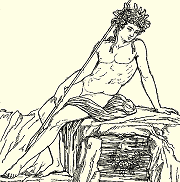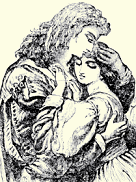|
Development of Sexual Behavior
|
|
Stages of Development: Adolescence
|
|
Erotic Behavior: Historical Note
|
|
By the middle of the 19th century, middle-class adolescents in Western countries found themselves both protected and pressured from all sides. They were kept busy preparing for “real life”: Extended study and an ever longer preparation for ever more specialized adult work no longer permitted sensual distractions. Young people now were, by definition, “immature”, even after puberty. They were also expected to remain sexually abstinent until marriage, but marriage was often impossible until the bridegroom had earned enough money and thus could“afford to support a family”.
At the same time, however, educated adults remained well aware of the erotic potential of the young as described and celebrated in all great civilizations. Indeed, many of the famous lovers in Western art and literature are adolescents: Eros and Psyche, Pyramus and Thisbe, Troilus and Cressida, Daphnis and Chloe, Floire and Blancheflor, Aucassin and Nicolette, Romeo and Juliet. Young females and males were also often depicted as objects of passion: Helen was only 12 years old when she left her husband Menelaos and followed Paris to Troy. Narcissus was 16 when “many youths and maidens sought his love”. Ganymede was even younger when Zeus made him his favorite, Hyacinthus was an adolescent when Apollo and Zephyrus quarreled over his possession, and so was Hylas when Hercules abducted him from his parents. We also find examples of amorous teenagers in famous operas: The love-obsessed Cherubino in Mozart’s “Marriage of Figaro” is about 15 years old; Octavian in Richard Strauss’ “Rosenkavalier” is 17 and the lover of an older married woman.
Eventually, the contradiction between “high culture” and middle class morality became too embarrassing to continue. Especially the young rebelled against the “hypocrisy” of their elders, and in the second half of the 20th century most Western countries adopted a more realistic and permissive attitude toward adolescent erotic behavior.
|
|

|
|

|

|
|
19th- century illustrations of famous love stories
(from the left): Eros and Psyche, Narcissus, Ganymede, Apollo and Hyacinthus, Romeo and Juliet.
Source: FCIT, http://etc.usf.edu/clipart
|
|
|